Anemone oak forest, listed in the Red Book. Description. Usage
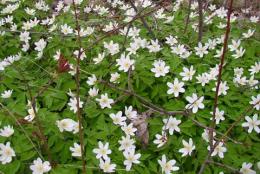
Amazing with its grace and fragility, Anemone is a medicinal plant with a wide range of uses. To pick a flower of this plant means to destroy it. It is not surprising that it is listed in the Red Book as an endangered plant species.
There is a belief that during the expulsion of Adam and Eve from Paradise, they were showered with snow as punishment. When Eve began to cry from despondency and chills, God turned the snow flakes into flowers of anemone.
Content:
- Various name options
- Flowering and harvesting time, plant description
- Healing properties of Anemone oakberry
Various name options
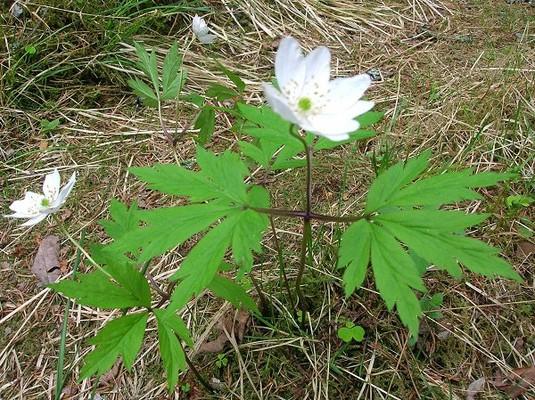
From Latin, Anemone nemorosa is translated as “daughter of the winds.” And indeed, the plant begins to sway even from a light breeze.
There are also several popular names, which include:
- Buttercup. This name arose from the fact that anemone, like the entire ranunculaceae family, contains anemonin.
- Freckles. This name was described in the book “Medicinal Herbs” by Zoska Veras.
- Kuroslep. This name is associated with the toxic effects of oak anemone.
- Drip. The shape of the leaves is vaguely similar to hemp.
- Snowdrop. Oak anemone is similar and the first harbinger of spring is like snowdrops.
The name of the plant may suggest one of the main reasons for the decrease in their number.The main habitat of Verenitsa oak forest was oak forests located in the European part of Russia. Due to the decrease in the number of oak groves, the anemone, which was directly dependent on them, began to disappear along with them.
Another reason for the gradual disappearance of the plant is people’s love for flowers. In spring, people pick them, enchanted by the tenderness of the beautiful flowers. And the plant is so fragile that it can be easily pulled out of the ground along with its thin root system. A new plant will produce its first flowering only after 10–12 years.
Thus, Anemone dubravnaya is under state protection and is listed in the Red Book of the following regions of Russia: Moscow region, Belgorod region, Bryansk region, Vladimir region, Vologda region, Chuvashia, Yaroslavl region, Mari El, Murmansk region, Oryol region, Novgorod region, Smolensk region, Stavropol region, Tula region.
To preserve the fragile, but strong in their beneficial properties, Oak anemone needs to limit mass collections in natural habitats and increase cultivation.
Many, seeing a vast clearing, pick flowers without even thinking about what a rare flower it might be and destroy many types of plants out of idle curiosity for beauty, causing irreparable damage to nature.
Flowering and harvesting time, plant description
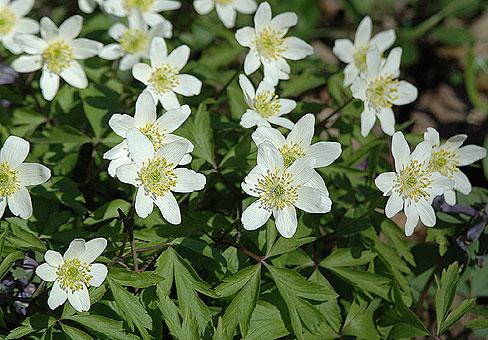
Flowering occurs between April and May. The plant is collected during flowering. Moreover, during collection you should be very careful, since contact with the skin can cause noticeable irritation at the point of contact. Therefore, you should wear gardening gloves that protect the skin of your hands from direct contact with the anemone.
grassy perennial of the Buttercup family (Ranunculaceae) has an erect, slightly pubescent stem, reaching from 15 to 25 centimeters in height. It has horizontal rhizomes with a smooth surface. The roots grow rapidly, which contributes to the creation of bushy thickets.
The leaves are divided into three parts. Their similarity to hemp leaves has been noted. There are no leaves or only one leaf rarely appears near the roots. The flower grows singly in white, pale pink and, less commonly, lilac. Most often the flower has 6 petals (sometimes their number reaches 7 to 8). The diameter of oak anemone flowers reaches from 20 to 30 mm. The fruit is in the form of an achene, there are many small seeds inside, which ripen in June.
Oak anemone blooms in the second half of spring. Starting in March, the root system begins to actively grow and grows a stem with curled, not yet very developed leaves above the surface of the earth.
By the beginning of April, the stem rushes up to 5 or 10 cm. At this moment, the already developed leaves open and the first shoots appear on which the flower will grow. By mid-April the plant begins to bloom with its magnificent, fragile, snow-white flowers.
More often, Anemone grows in deciduous forests, since it is there that the most favorable conditions are created: loose, fertile soil and a lot of shady space. Oak anemone mainly grows in groups, forming extensive thickets. Each plant blooms annually for 40–50 years. Reproduction of the plant occurs through root shoots and with the help of seeds.
There are about 150 varieties of anemone.It grows in the European part of Russian forests, in the eastern part to the Volga, in the Smolensk Poozerie National Park and throughout the region as a whole. In Ukraine in the forest-steppe and western Polesie zone. Oak anemone can also be found in Western and Central Europe. In Siberia there is also a similar species to the oak anemone.
Healing properties of Anemone oakberry
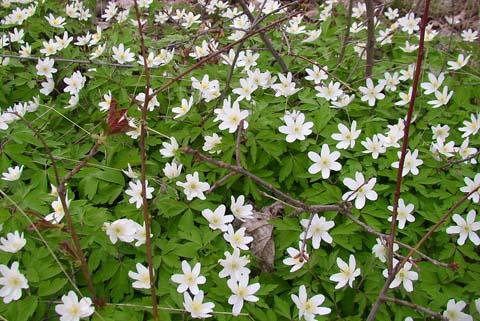
Due to the content of anemoneal, vitamin C, saponin, tannin, resins, organic acids, alkaloids and other substances in the plant, it has extensive healing properties:
- Antifungal. Destroys various types of fungal formations.
- Sedative. Has a calming and antispasmodic effect.
- Painkiller. Loosens and relieves painful sensations.
- Expectorant. Promotes rapid removal of mucus, reducing its viscosity.
- Bactericidal. Neutralizes pathogens of various infectious diseases.
- Sweatshop. Enhances the ability to remove toxins and salts from the body.
Usage
Based on its healing properties, anemone is included in preparations for migraines, dermatitis, eczema, purulent wounds, rheumatism, gout, and sexual weakness in men and women. However, do not forget that the plant is poisonous!
It is necessary to use tinctures and preparations based on it in limited quantities, after consulting a doctor. The plant is collected during flowering and dried in the shade at temperatures up to 40 degrees Celsius. The dried plant is subsequently stored in glass containers for 1 year.
Medicinal tinctures can be either water or alcohol:
- Infusion of leaves. Pour 10 grams of fresh (2 grams of dry) crushed leaves into one glass of boiling water and leave for four hours.Strain and drink several small sips throughout the day, 20 minutes before meals. A tincture of dried leaves can be drunk to treat inflammation of the spleen, kidneys, bladder and liver, the formation of gallstones, and colds. It is drunk for menstrual irregularities, impotence, toothache and headache. But before use, you should consult your doctor.
- Alcohol tincture. If it is not possible to purchase pure medical alcohol, you can use good vodka for the tincture. One hundred grams of dried crushed plant must be filled with one liter of alcohol. The tincture should be stored in a dark place, shaking 1 – 2 times a day. After ten days, the tincture must be strained through a fine strainer or double gauze. It is used for external use, suitable for use for one year, for diseases such as radiculitis and rheumatism.
Oak anemone is also used in gardening. Back in the 16th century, they began to grow anemone in gardens, finding and transplanting them from oak forests. Beautiful snow-white flowers are used to decorate flower beds, borders, garden slides, become a beautiful decoration for lawns and are simply grown for cutting.
To decorate and complement the bright colors, varieties with pink, red and purple flowers are planted with the white anemone. The oak anemone will look harmonious under trees or in a rock garden. Anemone is also distinguished by its frost resistance, so this plant does not need to be covered for the winter.
The oak anemone is of genuine interest to beekeepers. Its subtle aroma attracts insects, including bees.
See how to treat pneumonia with anemone:
Interesting information about the vegetable garden

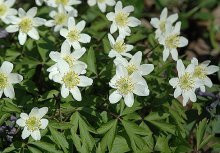

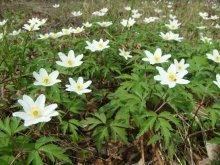
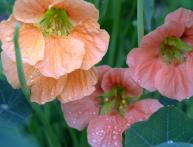

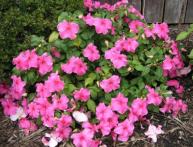
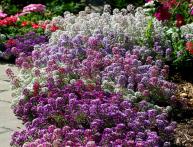
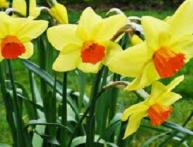


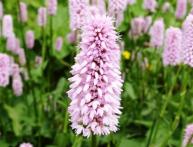
Comments
In the North-West, it is the anemone that is most often called the snowdrop. And a few years ago, someone planted a small anemone bush in a city park. Now, in the spring, a white clearing of anemone snowdrops appears under the trees there.